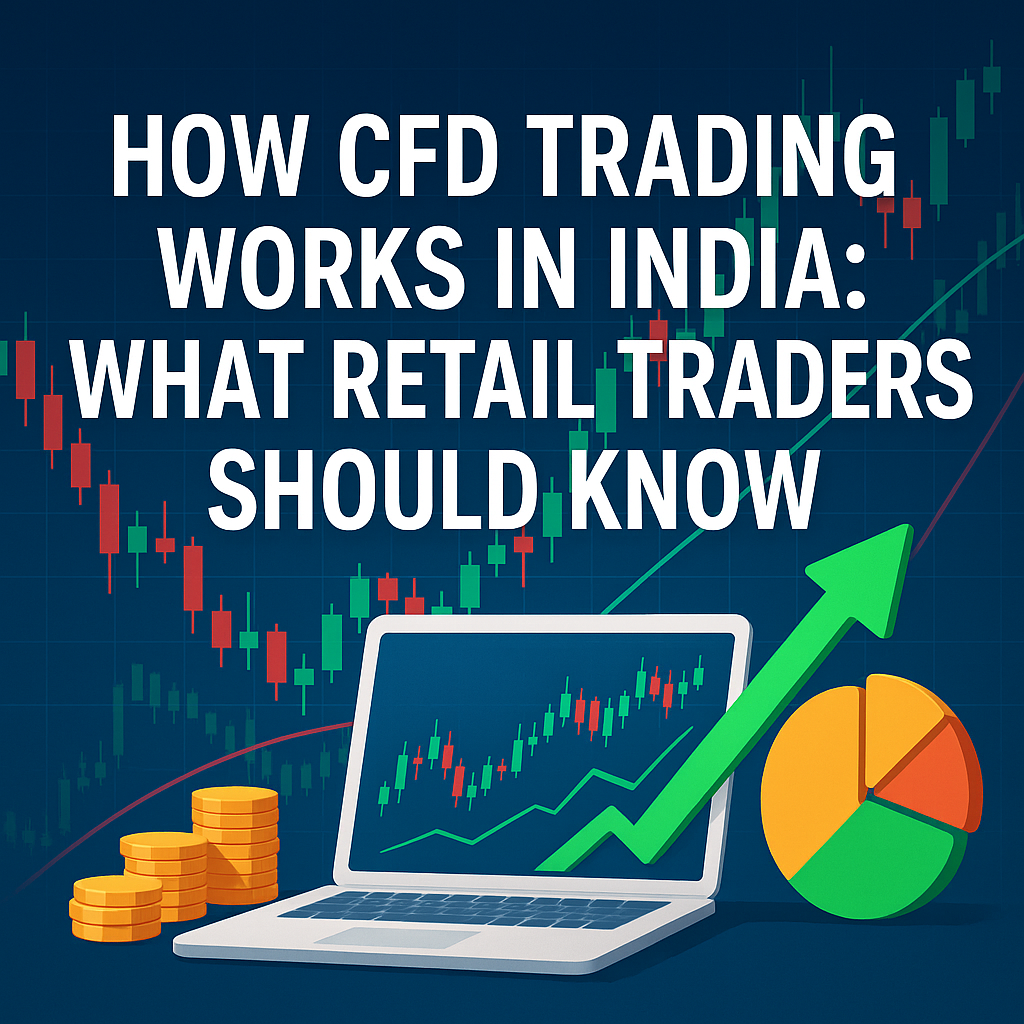If you’re an Indian trader exploring new ways to grow your money in the markets, you’ve probably heard of CFD trading.
It sounds global. It sounds advanced. It sounds… complicated.
But what exactly is CFD trading, and more importantly — can you do it legally from India?
In this blog, we’ll simplify what CFD trading is, explain how it works, and help Indian retail traders understand the rules, risks, and rewards — so you can make smart decisions with confidence.
💡 First, What is CFD Trading?
CFD stands for Contract for Difference. It’s a form of derivatives trading where you don’t buy the actual asset (like a stock or commodity).
Instead, you trade based on how the price moves.
✅ Example:
Let’s say you think gold will go up.
You enter a CFD trade on gold at ₹60,000. If gold rises to ₹61,000, you make a profit on the ₹1,000 price difference — without owning any gold.
You’re trading the price difference, not the asset itself. That’s why it’s called a Contract for Difference.
📍 Is CFD Trading Legal in India?
Here’s the honest answer:
👉 CFDs are not regulated or officially allowed by Indian exchanges like NSE, BSE, or MCX.
SEBI (India’s market regulator) does not permit trading in CFDs through domestic brokers.
However, many Indian retail traders use international platforms that allow CFD trading on:
Global stocks (Apple, Tesla, Google)
Forex pairs (EUR/USD, GBP/JPY)
Commodities (Gold, Crude Oil, Silver)
Cryptos (BTC, ETH, etc.)
Indices (US30, NASDAQ100, FTSE100)
So, while Indian brokers can’t offer CFDs, Indian residents can legally access them via offshore brokers — at their own risk.
🔍 Always choose reputed, well-regulated international platforms with proper licenses.
🛠️ How Does CFD Trading Work?
Here’s how a typical CFD trade works for an Indian retail trader:
Open an account with a global CFD broker
Fund your account (many accept INR or crypto deposits)
Choose your asset (e.g., Gold, Nifty50, EUR/USD)
Decide to buy (if price will go up) or sell (if price will fall)
Set your lot size, stop-loss, and take-profit
Execute the trade
Close the position and book profit/loss based on price change
✅ Why Do Indian Traders Like CFDs?
🌍 Access to international markets
📉 Profit from both rising and falling prices
💸 Start small with low capital
⚡ Fast execution and flexibility
🛠️ Advanced tools, charts, and 24/5 trading
🏁 Conclusion
CFD trading offers a flexible, global, and high-potential way to trade the markets — even for Indian retail traders. But it comes with responsibility.
Since it’s not regulated within India, it’s important to do your research, manage risk, and choose the right platform.If you’re willing to learn, start small, and stay disciplined, CFD trading could open up a whole new world of opportunities.




